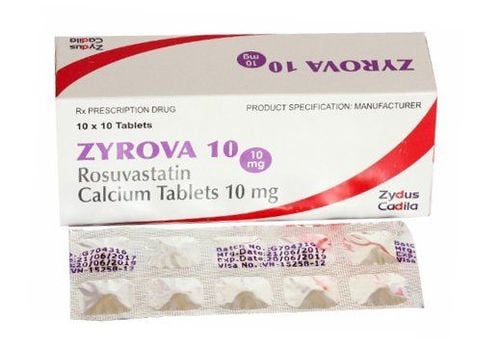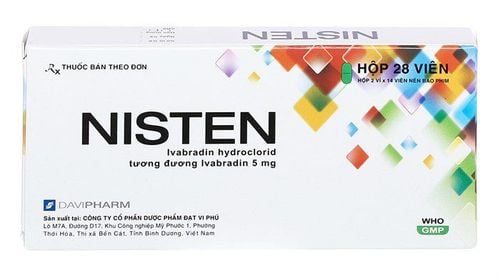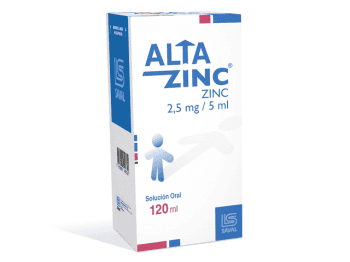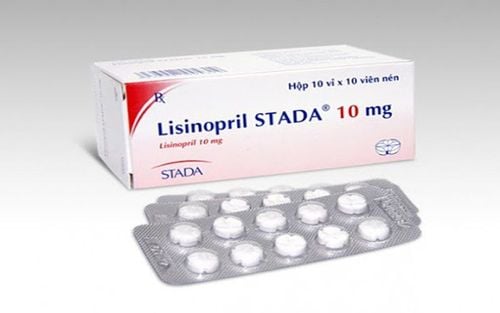This is an automatically translated article.
Amiodarone is usually indicated for the treatment of severe arrhythmias and to help maintain a stable heart rate. Depending on the age and physical condition of each patient, the doctor will make the most suitable choice of Amiodarone medication.
1. What is Amiodarone?
Amiodarone drug belongs to the group of cardiovascular drugs (antiarrhythmics), is prepared in 2 main forms, including: Amiodarone 200mg tablets and Amiodarone 150mg / 3ml syringes. Amiodarone is mainly used to treat some serious cardiac arrhythmias and to help restore the heart rhythm to a normal and stable level.
2. Indications and contraindications to the use of Amiodarone
2.1 Indications for use of Amiodarone drug Amiodarone 150mg and 200mg drugs are usually indicated for use in the following cases:
Patients with ventricular arrhythmias:
Treatment or prevention of recurrence of dangerous ventricular arrhythmias ( high risk of death) has had a definitive diagnosis (such as ventricular tachycardia with dyskinesia or recurrent ventricular fibrillation) and is intolerant/responsive to other antiarrhythmic drugs. Adjunct to treatment of refractory ventricular tachycardia/ventricular fibrillation with cardiopulmonary resuscitation, anti-defibrillation and vasopressors (Vasopressin, Epinephrine). Treatment of single and multiple ventricular tachycardia without angina, hypotension <90 mm Hg, pulmonary edema or hemodynamically stable ventricular tachycardia. Helps control polyventricular tachycardia with normal QT interval. Prophylaxis of ventricular arrhythmias and sudden cardiac death:
Secondary prophylaxis for ventricular arrhythmias, which have not responded to adequate doses of antiarrhythmic drugs previously taken, or are intolerant of antiarrhythmic drugs. arrhythmias were selected. Primary prevention of ventricular tachycardia lasting more than 30 episodes or associated with hemodynamic instability. Sudden cardiac arrest or ventricular fibrillation in a person with a non-persistent ventricular arrhythmia myocardial infarction. Treatment of supraventricular tachyarrhythmias:
Helps to convert the rhythm from atrial fibrillation to normal sinus rhythm in patients with atrial fibrillation lasting less than 48 hours. For patients with Wolff-Parkinson-White syndrome with atrial fibrillation, atrial flutter or chronic heart failure, Amiodarone can also be selected for cardioversion. Support heart rate control for patients with heart failure or atrial fibrillation (no accessory pathway). Prophylaxis of atrial fibrillation after cardiothoracic surgery, tachycardia with wide QRS complexes of unknown mechanism:
Use Amiodarone in patients with impaired left ventricular function or coronary artery disease. Treatment of ventricular / supraventricular arrhythmias in patients with hypertrophic cardiomyopathy. 2.2 Contraindications to taking Amiodarone Amiodarone is contraindicated in the following cases:
Avoid using Amiodarone in cardiogenic shock. 2nd and 3rd degree AV block (unless a temporary pacemaker is in place), bradycardia causing syncope. Sinus node dysfunction causes severe sinus bradycardia. Hypersensitivity to iodine or hypothyroidism. Avoid intravenous administration of Amiodarone to patients with cardiovascular collapse, respiratory failure, or severe hypotension. Avoid concurrent administration of whole doses of Amiodarone in patients with myocardial hypertrophy and congestive heart failure. Contraindicated for patients using drugs that cause torsade de pointes, including antiarrhythmic drugs of class IA, class III,... Patients with hypersensitivity or allergy to Amiodarone or any of its ingredients.
3. Dosage and usage of Amiodarone
3.1 Amiodarone Dosage Usual Amiodarone Dosage for ventricular arrhythmias:
Oral Amiodarone: Oral loading dose of 200mg / 3 times / day (for the first 7 days), then reduce dose in the next week (oral 200mg / day) 2 times/day). Intravenous Amiodarone: A slow intravenous infusion of 5mg/kg Amiodarone over 20-120 minutes. Patients may receive repeated doses of Amiodarone infusion if needed. Usual Amiodarone Dosage for Supraventricular Arrhythmias
For adults: Oral loading dose of 600-800mg/day (for 1-4 weeks). Then reduce the dose slowly and maintain taking 100-400ng / day. For children: Oral loading dose of 10-15mg/kg/day (about 4-14 days). Then take a maintenance dose of 5mg/kg/day for several days. For patients with impaired renal function, no dose adjustment of Amiodarone is required. However, patients with hepatic impairment must reduce the dose to prevent the risk of hepatotoxicity.
3.2 How to use Amiodarone Because Amiodarone is made in the form of tablets or intravenous injection, so the usage of each type is different, specifically:
Amiodarone tablet form: Take it after meals. best, helping the drug to be absorbed effectively in the body. Amiodarone Infusion: To be administered only by qualified persons, such as healthcare professionals. Therefore, patients should avoid self-administering Amiodarone at home without a doctor's instruction.
4. Some side effects of Amiodarone
During the use of Amiodarone, patients may experience some of the following side effects:
Neurological symptoms, such as fatigue, tremors, body discomfort, tingling fingers / toes, numbness frostbite, ataxia, paresthesia or dizziness. Gastrointestinal symptoms such as constipation, loss of appetite or nausea. Circulatory symptoms such as arrhythmia, post-injection hypotension, bradycardia, heart failure, atrioventricular block. Respiratory symptoms such as interstitial pneumonia, diffuse alveolitis, or pulmonary fibrosis. Skin symptoms such as skin pigmentation, erythema, or sensitivity to sunlight. Eye symptoms such as visual disturbances. Endocrine symptoms such as hyperthyroidism or hypothyroidism. Other side effects include changes in taste, hot flashes, blood clotting disorders, or changes in smell. Patients should inform their doctor immediately if any side effects occur while taking Amiodarone.
5. Important notes in the process of taking Amiodarone
5.1 What precautions should be taken while using Amiodarone? Here are some important notes when using Amiodarone that patients need to understand:
Amiodarone is highly toxic, potentially fatal, especially the risk of lung toxicity. Therefore, when using this drug, it is necessary to have close supervision of a specialist. When taking Amiodarone, patients should have an annual eye exam to prevent some of the drug's effects on the eyes. Avoid prolonged sun exposure while being treated with Amiodarone. When intravenous infusion Amiodarone should be maintained at a slow rate. If the infusion is long or repeated multiple times, the patient may need a catheter to perform the central intravenous infusion. Amiodarone should be used with caution in patients with liver failure, congestive heart failure, hypokalemia, thyroid dysfunction, impaired vision, or who need surgery. The use of high-dose Amiodarone can cause conduction disturbances with autoventricular rhythm, causing bradycardia, especially in elderly people who are taking Digitalis. Caution should be exercised when amiodarone is used in combination with calcium channel blockers or beta blockers because of the risk of atrioventricular block and bradycardia. Administration of intravenous amiodarone may increase the risk of worsening heart failure. When using Amiodarone in combination with other antiarrhythmic drugs or Digitalis may cause hypokalemia or electrolyte disturbances. Use caution with Amiodarone in subjects with iodine hypersensitivity. 5.2 Precautions for use of Amiodarone in special populations Amiodarone may cross the placental barrier, causing a number of potential harms to the fetus, including thyroid effects, bradycardia, growth retardation or poisoned. Furthermore, pregnant women taking Amiodarone are also at risk of giving their babies congenital goiter (hypothyroidism or hypothyroidism). Therefore, Amiodarone is not recommended for use in pregnant women.
In addition, Amiodarone and its metabolites may be excreted in breast milk, causing growth retardation in the neonate. On the other hand, the drug also contains a large amount of iodine, so breastfeeding women should avoid taking this drug, or stop breastfeeding if forced to take the drug.
5.3 Interactions of Amiodarone with other drugs Amiodarone can interact when used with the following drugs:
Drugs that cause torsade de pointes such as Quinidine, Disopyramide, Intravenous Erythromycin, Dofetilide, Sotalol, Intravenous Spiramycin, intravenous vincamin,... Class IA antiarrhythmic drugs, Alfuzosin, calcium channel blockers, P-glycoprotein inhibitors, Cimetidine, Protease inhibitors,... Bile acid-binding drugs, derivatives of Rifamycin , P-glycoprotein inducers, Orlistat, Deferasirox,... Above is all the important information about Amiodarone. Knowing the use, dosage, and effects of the drug helps the process of using it to be more effective.
Please dial HOTLINE for more information or register for an appointment HERE. Download MyVinmec app to make appointments faster and to manage your bookings easily.













